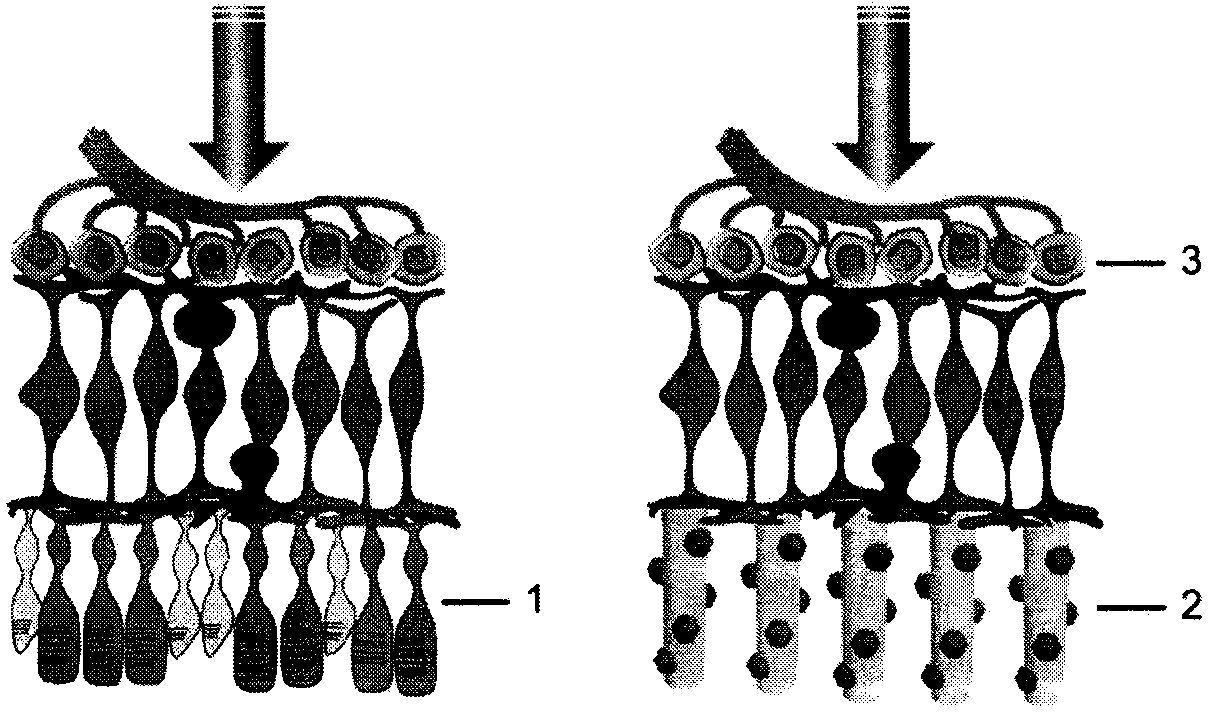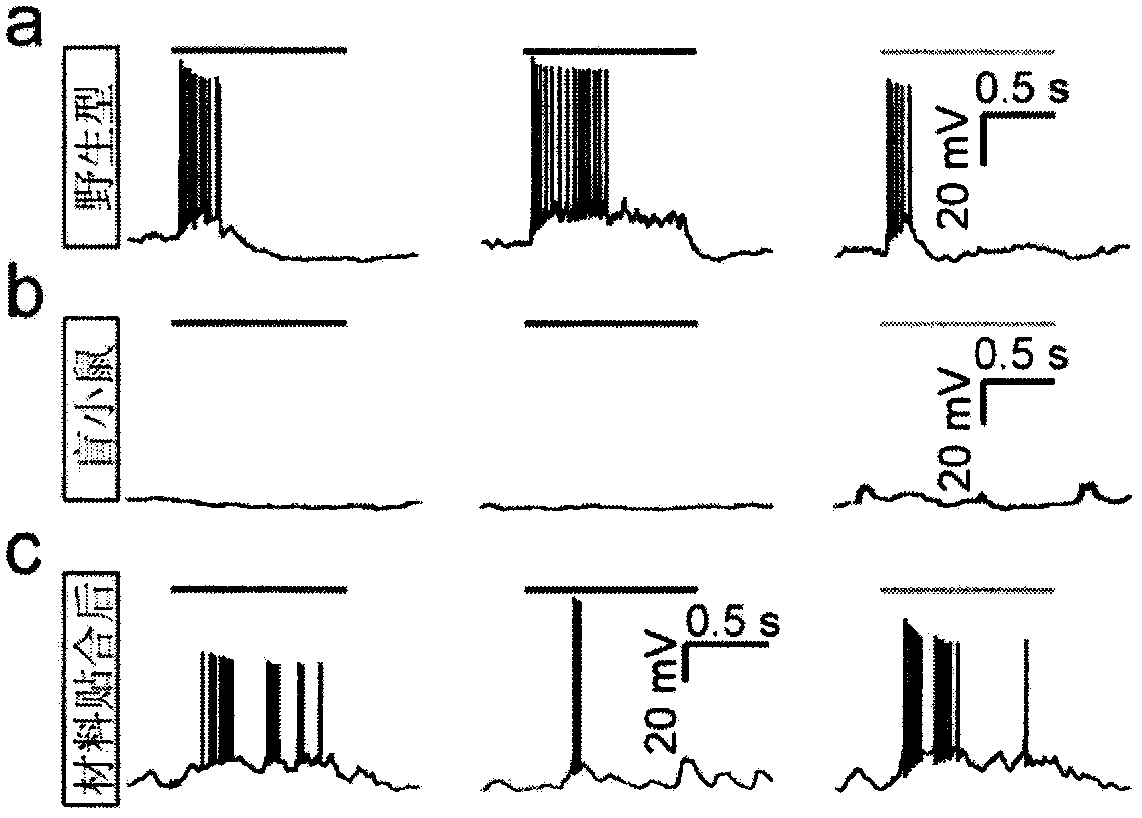Application of semiconductor nano photosensitive material in preparing visual repair material
A technology for repairing materials and photosensitive materials, which can be used in prosthesis, medical science, tissue regeneration, etc. It can solve the problems of disappearance, affecting the treatment effect, visual degradation, etc., and achieves a large interaction area, large charge mobility, and high specific surface area. Effect
- Summary
- Abstract
- Description
- Claims
- Application Information
AI Technical Summary
Problems solved by technology
Method used
Image
Examples
Embodiment 1
[0025] Material preparation:
[0026] TiO 2 Fabrication of nanowires: TiO nanowires were grown vertically on fluorine-doped tin oxide (FTO)-coated glass or polymethylsiloxane (PDMS) by a hydrothermal method. In a typical synthesis, 0.1 g of titanium foil and 18 ml of 0.1 M HCl solution were placed in a Teflon-lined stainless steel reaction vessel. Afterwards, after 30 minutes of ultrasonic cleaning, the PDMS was immersed in a 1:1:1 (v / v) mixed solution of acetone, ethanol and deionized water (DI), and hydrothermal synthesis was performed at 150°C for 12 hours in an electric oven;
[0027] Au-TiO 2 Nanowire Synthesis: On TiO 2 After the nanowires were prepared, the TiO 2 Au nanoparticles were deposited on the nanowires. Briefly, FTO substrates with TiO nanowires were soaked into 0.01M HAuCl 4 solution (adding 0.2M NaOH to adjust the pH value to 4.5) for 2h. Afterwards, the samples were thoroughly rinsed with deionized water, air-dried, and annealed at 300°C for 2 hours; ...
Embodiment 2
[0029] Embodiment 2 in vitro test
[0030] The application of the prepared repair material in the isolated retina and the recording of the light response: the mice used in this example are rd1-cDTA transgenic mice aged 8-12 weeks, and the wild-type mice are 8-12 weeks old. C57B1 / 6 mice at the age of one week; when testing the visual repair effect of the material on the isolated retina, the outer layer and area of the retina of the blind mouse that was quickly removed and remained active was about 1 cm 2 The materials were closely attached, and the retinal ganglion cell layer was placed upwards, placed in the incubation tank, and the patch clamp technique was used to perform whole-cell recording of the ganglion cells with experimental methods known in the art. Blind mice and wild-type small For mice, put the removed retina directly in the incubation tank for whole-cell recording; the light stimulation mode is usually near ultraviolet light, blue light or green light, and th...
Embodiment 3
[0032]The prepared prosthetic material was applied to test mice and the light reaction was recorded: the area was about 0.5-1.5mm 2 Implant the material between the retina and the pigment epithelium of the blind mouse eye, and after at least 2 days of operation recovery period, apply the electrophysiological technique in vivo to the contralateral visual cortex of the implanted eye with the experimental operation method known in the art. Light response recording: When recording, the head of the mouse was fixed, a skylight was opened in the appropriate area of the skull, electrodes were inserted into the visual cortex, the light source was aimed at the implanted eye, and the light response of neurons in the contralateral visual cortex was recorded. Blind mice and wild-type mice were directly subjected to in vivo electrophysiological recordings; the light stimulation mode was often near-ultraviolet light, and the light-giving time was usually 1s; Cortical neurons did not signif...
PUM
| Property | Measurement | Unit |
|---|---|---|
| diameter | aaaaa | aaaaa |
| length | aaaaa | aaaaa |
| area | aaaaa | aaaaa |
Abstract
Description
Claims
Application Information
 Login to View More
Login to View More - R&D
- Intellectual Property
- Life Sciences
- Materials
- Tech Scout
- Unparalleled Data Quality
- Higher Quality Content
- 60% Fewer Hallucinations
Browse by: Latest US Patents, China's latest patents, Technical Efficacy Thesaurus, Application Domain, Technology Topic, Popular Technical Reports.
© 2025 PatSnap. All rights reserved.Legal|Privacy policy|Modern Slavery Act Transparency Statement|Sitemap|About US| Contact US: help@patsnap.com



